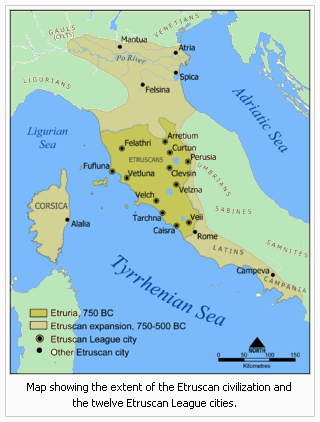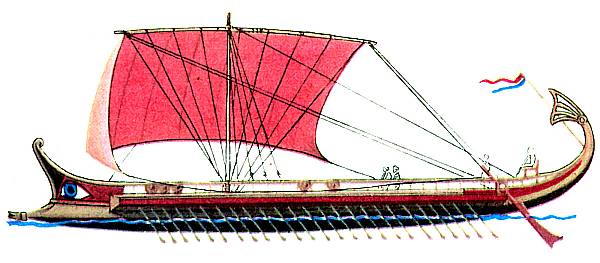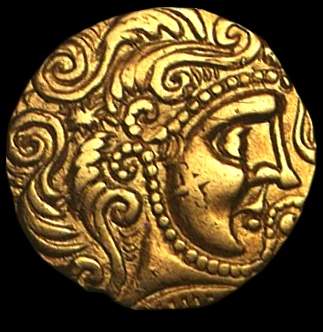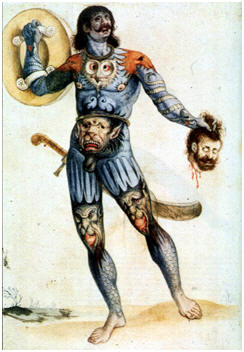The Weighted Scales: The World of an Aborted Rome
By Errnge
Prologue: A Blip In History
Part One: The Rise of the Rasna

Precious little is known about the Rasna [1] in their early times. Most modern archaeologists agree that they were the descendants of Anatolian colonizers, possibly escaping Greek expansion. They were closely related to the Rhaetians to the northeast, who are believed to have branched off as they moved further inland towards the Alps. Both seem to be related to, if not directly descended from, the Villanovan Culture of central Italia.
But surely, by the 7th Century B.E. [2] the Rasna had not only become unique from the Villanovans, but dominant over their entire domain. Contact with Greek merchants led to the Rasna adopting and eventually creating their own alphabet. The early Rasna, judging by the sophisticated and elaborate burials of their aristocracy, developed a city-state structure similar to the Greeks, but unlike the Greeks in their worship and deification of each city’s respective ruler.
During the 6th Century B.E. the Rasna expanded both north and south. With the adoption of Greek-style hoplite soldiers, they were able to gain considerable clout, and brought under their direct control everything between the Padus [3] and the Tiber. The breadth of their influence grew beyond the Apennine Mountains to the North, and Campania to the South. In Campania, the Rasna subjugated the Oscans present there. The Oscans, an Italic group caught between the Rasna north of them and the Greeks in the South, could do little but pay homage to the might of the Rasna.

The Rasna attributed much of their wealth to mining. Within their lands were vast veins of iron and copper, extremely valuable minerals, which they mined, refined, crafted into anything from pottery to weaponry, and sold. They built rich cities, solidifying the king-worship already present, and allowing said kings to maintain order within their domains. Cities such as Cisra [4], Veii, Perusia, Fufluna, Velch [5], Parma, Mantua, Adria, and Roma, among others, grew and prospered with either Rasna foundation, or Rasna rule. The cities ruled by Rasna formed a loose organization or confederacy very similar to those of the Greeks and other archaic groups in the East.
But the growing Rasna monopoly over trade in the Tyrrhenian and Ligurian Seas led to direct conflict with the Greeks settled in the South of Italia, as well as Liguria and southern Gaul, and the Eastern coast of Iberia. The Phoceans, Ionian Greek colonizers (founders of cities like Massalia, Neapolis, Cumae, Alalia, Rhegion, Siris, and Leontani, amongst others) became a stalwart enemy of the Rasna. Skirmishes and small naval conflicts followed.
At this time, another group, whose ancestry also resided in the East, the Punics of Carthage, were growing in influence. The Carthaginians had for a long time been rivals with the Greeks, desiring control of maritime commerce for themselves. And as the old saying goes: My enemy’s enemy is my friend.
So the Carthaginians formed an alliance with the Rasna, and together they fought the Greeks. These were commercial wars, fought solely for the sake of wealth and control over trade routes.
At the Battle of Allalia in 533 B.E. (540 B.C.) off the coast of Corsica, the joint Carthaginian-Rasna alliance confronted the Phoceans. The Greek fleet consisted of sixty pentekonters (ships with forty-eight oars and two rudders). The allied armada was twice as large, also comprised of pentekonters. The Greek fleet was able to drive off the aggressors, but lost over two thirds of their force, and all surviving ships were severely damaged. The Greeks, realizing that should their aggressors attack again that they would be powerless to stop them, evacuated Corsica and sought refuge in Rhegion.

Corsica came under the influence of the Rasna, while Sardinia fell into Carthaginian hands. This would be the height of the Rasna’s influence and control over Italia. They continued to assault Greek ships, and pushed for more control further south. But they could not hold that which they had gained.
It was the beginning of the end for the Rasna.
------------------
[1] Rasna- What the Ancient Etruscans referred to themselves as.
[2] The Dor Immanu’el calendar correlates to seven years earlier than our own. Example: OTL 7 B.C. (B.C.E.) is equal to ATL 1 A.E.
[3] The Po River
[4] The Etruscan name for Caere
[5] The Etruscan name for Vulci
By Errnge
Prologue: A Blip In History
Part One: The Rise of the Rasna

Precious little is known about the Rasna [1] in their early times. Most modern archaeologists agree that they were the descendants of Anatolian colonizers, possibly escaping Greek expansion. They were closely related to the Rhaetians to the northeast, who are believed to have branched off as they moved further inland towards the Alps. Both seem to be related to, if not directly descended from, the Villanovan Culture of central Italia.
But surely, by the 7th Century B.E. [2] the Rasna had not only become unique from the Villanovans, but dominant over their entire domain. Contact with Greek merchants led to the Rasna adopting and eventually creating their own alphabet. The early Rasna, judging by the sophisticated and elaborate burials of their aristocracy, developed a city-state structure similar to the Greeks, but unlike the Greeks in their worship and deification of each city’s respective ruler.
During the 6th Century B.E. the Rasna expanded both north and south. With the adoption of Greek-style hoplite soldiers, they were able to gain considerable clout, and brought under their direct control everything between the Padus [3] and the Tiber. The breadth of their influence grew beyond the Apennine Mountains to the North, and Campania to the South. In Campania, the Rasna subjugated the Oscans present there. The Oscans, an Italic group caught between the Rasna north of them and the Greeks in the South, could do little but pay homage to the might of the Rasna.

The Rasna attributed much of their wealth to mining. Within their lands were vast veins of iron and copper, extremely valuable minerals, which they mined, refined, crafted into anything from pottery to weaponry, and sold. They built rich cities, solidifying the king-worship already present, and allowing said kings to maintain order within their domains. Cities such as Cisra [4], Veii, Perusia, Fufluna, Velch [5], Parma, Mantua, Adria, and Roma, among others, grew and prospered with either Rasna foundation, or Rasna rule. The cities ruled by Rasna formed a loose organization or confederacy very similar to those of the Greeks and other archaic groups in the East.
But the growing Rasna monopoly over trade in the Tyrrhenian and Ligurian Seas led to direct conflict with the Greeks settled in the South of Italia, as well as Liguria and southern Gaul, and the Eastern coast of Iberia. The Phoceans, Ionian Greek colonizers (founders of cities like Massalia, Neapolis, Cumae, Alalia, Rhegion, Siris, and Leontani, amongst others) became a stalwart enemy of the Rasna. Skirmishes and small naval conflicts followed.
At this time, another group, whose ancestry also resided in the East, the Punics of Carthage, were growing in influence. The Carthaginians had for a long time been rivals with the Greeks, desiring control of maritime commerce for themselves. And as the old saying goes: My enemy’s enemy is my friend.
So the Carthaginians formed an alliance with the Rasna, and together they fought the Greeks. These were commercial wars, fought solely for the sake of wealth and control over trade routes.
At the Battle of Allalia in 533 B.E. (540 B.C.) off the coast of Corsica, the joint Carthaginian-Rasna alliance confronted the Phoceans. The Greek fleet consisted of sixty pentekonters (ships with forty-eight oars and two rudders). The allied armada was twice as large, also comprised of pentekonters. The Greek fleet was able to drive off the aggressors, but lost over two thirds of their force, and all surviving ships were severely damaged. The Greeks, realizing that should their aggressors attack again that they would be powerless to stop them, evacuated Corsica and sought refuge in Rhegion.

Corsica came under the influence of the Rasna, while Sardinia fell into Carthaginian hands. This would be the height of the Rasna’s influence and control over Italia. They continued to assault Greek ships, and pushed for more control further south. But they could not hold that which they had gained.
It was the beginning of the end for the Rasna.
------------------
[1] Rasna- What the Ancient Etruscans referred to themselves as.
[2] The Dor Immanu’el calendar correlates to seven years earlier than our own. Example: OTL 7 B.C. (B.C.E.) is equal to ATL 1 A.E.
[3] The Po River
[4] The Etruscan name for Caere
[5] The Etruscan name for Vulci
Last edited:


